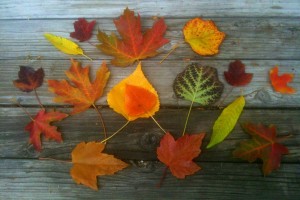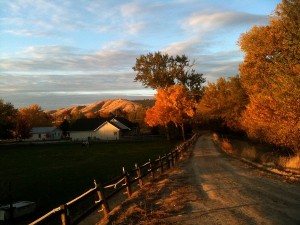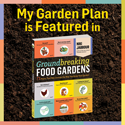
Autumn leaves aren’t just beautiful, they also are a valuable resource for your garden. So before you start raking up your fall leaves and throwing them out, consider these gardening tips on how to use fall leaves in garden. All photos copyright Teresa O’Connor.
It’s an autumn tradition to rake fallen leaves into big piles to throw away in trash bags … after you’ve jumped in the leaf piles, of course. When I was younger, we used to burn our leaves, which smelled lovely but wasn’t great for the air quality. But the fact is that we should have used those fall leaves in garden, instead of burning them or bagging them up for a landfill.
Fall leaves are packed with organic matter and nutrients for your garden. That’s why a thin layer of shredded leaves on your turf, vegetable beds, and around flowers, trees and shrubs, can provide a healthy mulch that protects and nourishes your plants. Just look at a forest, where many leaves fall year after year, adding to the quality of the soil, preventing erosion, conserving water and other benefits.
“Leaves in the forest provide about 50 to 80 percent of the nutrients that trees receive,” said Melissa Hopkins of the National Audubon Society in a recent National Public Radio interview. These “leaves protect the levels of moisture that reach the trees and also regulate the soil temperature. So they’re like gold for trees.”
You can have this same benefit in your garden too. Keep in mind these tips for using fall leaves in garden:
- Don’t leave thick layers of leaves around your garden; the leaves will kill whatever is underneath
- Chop up leaves finely with your lawn mower or shredder before using them
- Spread 2 to 3 inches around garden beds, and 3 to 6 inches around shrubs and trees
- Compost the remainder of your leaves to create great soil amendments next year
An exception: According to Virginia Cooperative Extension, you shouldn’t use the leaves of the black walnut tree (Juglans nigra) as a garden mulch. These leaves contain juglone, a chemical that inhibits growth of many plants. Although the walnut roots and hulls cause most of the problems, according to the extension service, the leaves also contain smaller quantities and should be avoided.
More advice on fall leaves in garden:
Learn why leaves change colors and other cool facts
Texas A&M Extension – Don’t Bag It
NPR Interview: Want to Improve Your Lawn; Don’t Bag Your Leaves












{ 4 comments }
It’s really kind of gratifying to see those leaves fall on the ground since we gather them up and compost them. Might as well view it that way, it helps a bit with the raking.
So true, Victoria. At least we’re putting all those leaves to good use, and not just sending them to the landfill. Right? Thanks for stopping by. Teresa
Thanks! You’ve helped get me to start composting our leaves. I was using wood chips, but it sounds like the leaves are even better!
Well, the leaves will decompose faster unless your wood chips are very finely chopped. You can even just cut your leaves into your grass, so they serve as a good mulch too. Enjoy your fall, Emmon.
Comments on this entry are closed.
{ 4 trackbacks }